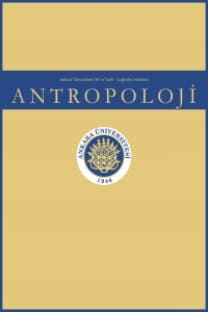Etkin Bir Göç Faktörü: Afetler
Göç farklı nedenlerle, zorunlu veya isteyerek, geçici ya da kalıcı olarak yaşanılan yerin terk edilerek, başka bir yere yerleşilmesi eylemidir. Ancak genel bağlamda insan göçü, din, kültür, ekonomi, savaş, terör ve afet gibi faktörlerle gerçekleşmektedir. İnsanoğlu varoluşundan buyana göç etmektedir. Modern insan (Homo sapiens sapiens) 200.000 yıl önce Afrika’dan diğer kıtalara yayılmıştır. Genellikle bu göçler zorunlu nedenlerle ortaya çıkmış, yiyecek bulma arayışından ya da afetlerden kaynaklanmıştır. Sel, deprem, tsunami, toprak kayması, çölleşme, volkanik faaliyetler gibi felaketlerin sonuçlarından etkilenen insanlar daha iyi bir yaşam sürebilmek umuduyla başka, güvenli yerlere göç etmiştir. İstatistiklere göre göç hareketleri ve göçmen sayıları her yıl artmaktadır. Bu durumdan öncelikle kadınlar, çocuklar ve yaşlılar etkilenmektedir. Ülkelerdeki altyapı ve kapasite eksiklikleri nedeniyle göçün kendisi yeni bir felakete neden olabilmektedir. Günümüzde bu sorun birçok ulusal ve uluslararası platformlarda tartışılmaktadır. Göçlerin yeni bir afete sebebiyet vermemesi için, risk azaltma planlarının bütün paydaşlarla birlikte çok yönlü olarak ele alınması gerektiği ortaya çıkmaktadır
An Effective Migration Factor: Disasters
Migration is the remove movement from one place to another place to provide basic needs for a certain time or for all life. But generally human migrations build up depends on social, religion, cultural, economic properties and disasters differently from the other creatures. Human migrated since his existence. And these migrations sometimes were obligatory. Homo sapiens sapiens spread across from Africa to the other continents of the world, 200.000 years ago. Generally humans need to move another places because of push factors such as disasters and hard geographical conditions. Humans affected of results of the floods, earthquakes, tsunamis, avalanches, desertification, typhoons and volcanic activities and migrate to another safety places for better life
Keywords:
Migration Disasters, Displacement,
___
- Chesner, C., Rose, W. I., Deino, A. L., Drake, R., & Westgate, J. A. (1991). Eruptive history of Earth's largest Quaternary caldera (Toba, Indonesia) clarified. Geology, 19(3), 200-203.
- Fagan, B. M. (2005). Atlas of Anthropology. Pearson Education, Inc. United State of America.
- Fussell, E., Lowe, S. R. (2014). The impact of housing displacement on the mental health of low-income parents after Hurricane Katrina, Social Science & Medicine Volume 113, 137-144.
- Gökçe, O., Özden Ş, Demir A (2008). Türkiye’de afetlerin Mekansal ve İstatistikel Dağılımı Afet Bilgileri Envanteri, T. C Bayındırlık ve İskan Bakanlığı Afet İşleri Genel Müdürlüğü, Afet Etüt ve Hasar Tespit Daire Başkanlığı, Ankara.
- Graumann, A., Houston, T., Lawrimore, J., Levinson, D., Lott, N., McCown, S., et al. (2005; güncellenme 2006). Hurricane Katrina a climatological perspective: Preliminary report. Edinilme: 8 Kasım 2007’de National Oceanic and Atmospheric Administration's National Climatic Data Center’den. http://www.ncdc.noaa.gov/oa/reports/tech-report-200501z.pdf.
- Hugo, G. (1996). Environmental Concerns and International Migration.International Migration Review, 30:1: 105-131.
- International Displacement Monitoring Center report (IDMC). (2015). Global Estimates 2015, https://www.IDMC/Publications/global-estimates-2015- people-displaced by disasters.
- International Displacement Monitoring Center report (IDMC). (2016). Internal Displacement 2016, https://www.IDMC/Publications/global-estimates-2016- people-displaced by disasters. (Erişim: 01.08.2016).
- İnalcık, H. (1997). A not on the population of Cyprus. Başbakanlık Osmanlı Arşivleri, İstanbul.
- Oliver-Smith, A. (2006). Disasters and forced migration in the 21st century. Social Science Research Council Understanding Katrina: Perspectives from the Social Sciences http://understandingkatrina. ssrc. org. (Erişim: 01.08.2016).
- Rampino, M. R., Self, S. (1993). Climate-volcanism feedback and the Toba eruption of∼ 74,000 years ago. Quaternary Research, 40(3), 269-280.
- Südaş, İ. (2004).Effects of Marmara Earthquake of August 17, 1999 on Population and Settlement: Case of Gölcük (Kocaeli). Aegean Geographical Journal, 13, 73-91, Izmir-Turkey.
- Soares, P., Ermini, L., Thomson, N., Mormina, M., Rito, T., Röhl, A., ... & Richards, M. B. (2009). Correcting for purifying selection: an improved human mitochondrial molecular clock. The American Journal of Human Genetics, 84(6), 740-759.
- Tuna, K., Parin, S., Tanhan, F. (2012). Van Depremi Sosyo-Ekonomik ve Psikolojik Durum Tespiti Raporu. Çocuk Araştırmaları Merkezi, İstanbul.
- Turney, C. S., & Brown, H. (2007). Catastrophic early Holocene sea level rise, human migration and the Neolithic transition in Europe. Quaternary Science Reviews, 26(17), 2036-2041.
- Varano, S. P., Schaferb, J. A., Cancinoc, J. M., Deckerd, S. H., Greenee, J. R. (2010). A tale of three cities: Crime and displacement after Hurricane Katrina, Journal of Criminal Justice, Volume 38 (1), 42-50.
- ISSN: 0378-2891
- Yayın Aralığı: 2
- Başlangıç: 1963
- Yayıncı: Ankara Üniversitesi Basımevi
